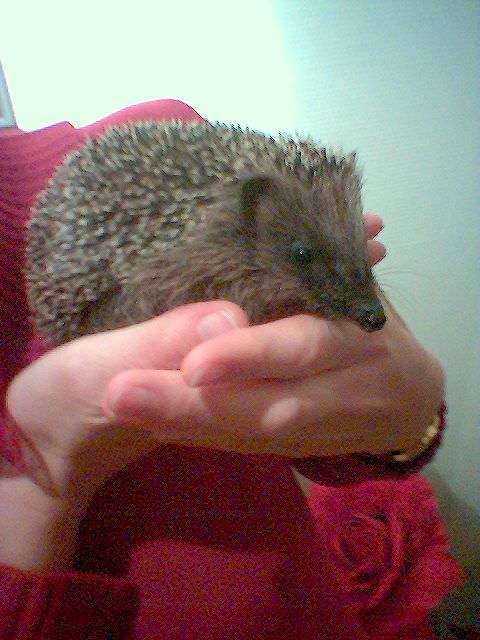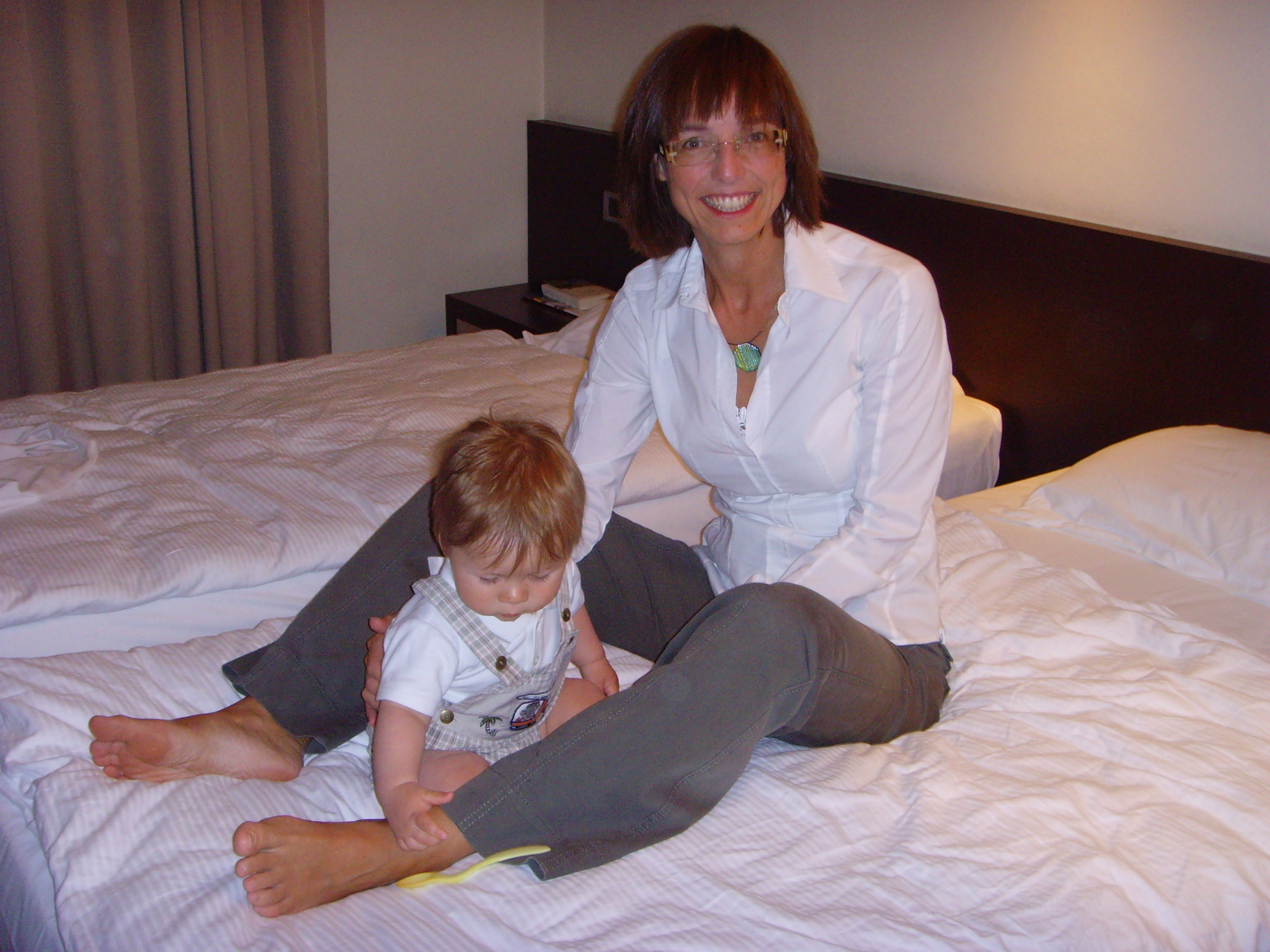For a time, Anne Ulrich, Director of the Institute of Biological Interfaces and Chair of Biochemistry at the Karlsruhe Institute of Technology (KIT), preferred to direct her scientific gaze to the heavens rather than toward earth. “I actually wanted to become an astronaut and when I was five I practiced balancing on one leg to get fit for space travel,” she says. She reconsidered when she saw a unique sculpture at a science fair that the creator had formed by imploding a half-empty soda bottle in liquid nitrogen. Her interest in what she calls “earthly phenomena” increased in high school biology when a project on the preparation of a clean turtle skeleton turned into an archeological dig involving an anthill. Chemistry won her over completely. “I thought it cool to choose chemistry as an exotic hobby,” she says. She entered the International Chemistry Olympiad and holed up with Chemistry by Charles E. Mortimer at summer camp while the other kids played cards.
Ulrich’s early devotion to science is no surprise, considering her family’s occupations. Ulrich’s brother is the only member of her immediate family whose career path veered away from science—after his postdoc in physics, that is. Ulrich’s father taught physics himself at the Technical University of Hamburg while her mother was a pharmacist. Her sister, Helle Ulrich, heads one of Cancer Research UK’s research groups, on DNA repair, at the London Research Institute.
As a researcher, it is an enormous privilege to create your own playground as your place of work.
- Ulrich
Ulrich’s own career in solid state NMR of biomembranes began humbly. As a woman researching techniques on the outskirts of an undeveloped field, she faced her share of obstacles. Her mentor at the University of Oxford, Anthony Watts, recalls her perseverance. “Anne had many knocks to her confidence,” he says. “It was the very early days of solid state NMR, and she had some exceptionally challenging projects, all of which worked and became successful.” Having walked into Watts’ lab of her own volition, Watts involved her in a ten-month project that spurred a five-year relationship. The work Watts and Ulrich did together as she completed her PhD was noteworthy. “We were trying to use deuterium as a nucleus for resolving structural details of membrane proteins against all odds of sensitivity,” says Watts, “but through Anne’s persistence and determination, she managed to resolve the conformation of retinal in bacteriorhodopsin in purple membranes using wide line solid state NMR.”
Her early postdoc work in solid state NMR inspired the research Ulrich pursues today at the KIT. “[NMR] has clearly established itself now as an elegant and powerful approach to characterize the intrinsically dynamic phenomena of biomembranes, and it is applicable to a wealth of biologically exciting systems,” she says. Her team has been characterizing the structures and interactions of membrane-active peptides with antimicrobial, cell-penetrating, or fusogenic functions. “Even these small, innocent-looking peptides tend to show a completely different or more complex behavior than anticipated, and they are also great for method development,” says Ulrich. The group has moved on to larger proteins, she says, to explore aspects such as the response of the transmembrane segments when a signaling receptor gets stimulated. “As a researcher, it is an enormous privilege to create your own playground as your place of work,” she says.
The Scientific Officer/CEO of Ulrich’s group, Birgid Langer, helps keep the “playground” running smoothly for the 50 or so scientists in the group, managing elements such as teaching and budget. She met Ulrich in 2003 during her own postdoc at the University of Karlsruhe. Her high opinion of Ulrich was cemented in just two days. “She is a powerful woman, excellent in science,” Langer says. “She is a hard and strong partner in discussion of science and other things.” Ulrich’s collaborator, Yechiel Shai, agrees. “Her lectures are fascinating,” he says, noting Ulrich’s enthusiasm when speaking on science as one of her most defining characteristics. Ulrich and Shai examine the molecular mechanism by which membrane-binding domains of gp41, the envelope glycoprotein of HIV1, shuts down the immune response by interacting with the transmembrane domain of the T-cell receptor. Ulrich’s expertise will help shed light on these interactions on a molecular level. “She is an excellent collaborator who puts in enormous effort to reach the target,” Shai says. The colleagues routinely meet up at the Biophysical Society Annual Meeting, where they initially met many years ago at a shared platform session.
Ulrich and Helle collaborate, too; the sisters’ areas of expertise are disparate enough to encourage fruitful collaboration without engendering competition. Ulrich has implemented NMR techniques on some of the proteins from Helle’s lab, helping to define a contact site between two interacting partners in the process of DNA repair. To Helle, though, the most salient aspect of her sisterly and scientific relationship with Ulrich is not experimental results. “Much more important than the scientific collaboration is the strategic advice that Anne gives me with respect to dealings with colleagues, students, or editors,” she says. These days, Helle’s two-year-old son, Philipp, is the main focus of the time the sisters spend together. “Anne takes her duties as an aunt very seriously,” says Helle. At conferences that hold both sisters’ interests, Helle presents her research while Ulrich walks her nephew around the exhibit hall collecting giveaways, and entertaining him in general. “She is very successful in this,” Helle adds.
Ulrich not only looks after her nephew; hedgehogs are always welcome to bunk in the hibernation hut in her garden, where she feeds them throughout the winter months. She admires the spiny creatures. “They are bristly on the surface, though not in an offensive way,” she says. “Once you gain their trust they unfurl so as to expose their soft furry stomachs and they like to be cuddled.” Helle maintains that what she calls her sister’s “spiritual kinship” with hedgehogs dates back to Ulrich’s childhood. “Anne has a knack for hedgehogs,” she says. “Even during her school days she used to take in hoglets for hibernation in our basement.” Watts noticed, too, recalling Ulrich’s trademark “sticky-up hairstyle.”
Though she no longer sports a spiky coiffure, Ulrich maintains her originality all the way down to her field of expertise. “Find your niche,” she says, “as there is no need to chase ‘sexy’ subjects, as long as you feel some genuine excitement about what you are studying.” According to her graduate student Marco Klein, Ulrich feels just that: “Her enthusiasm combined with joy for science is highly catching!”